Bird enthusiasts are often captivated by the enigmatic Common Buttonquail, a diminutive species with intriguing behaviors and distinctive traits. Despite its small size, this bird stands out for its unique characteristics and behaviors.
Belonging to the Turnicidae family rather than the quail family, the Common Buttonquail is renowned for its ground-dwelling nature, seldom taking to the air except when necessary.
A notable departure from avian norms is the females’ more prominent size and brighter plumage, challenging traditional gender roles in the bird kingdom. Their habitat spans various landscapes, from grasslands to open forests across Africa, Asia, Europe, and Australia.
Yet, their elusive nature and preference for dense ground coverings make them a challenging sight for observers. Join us as we unravel the mysteries of the Common Buttonquail’s fascinating world.
Physical Characteristics of the Common Buttonquail
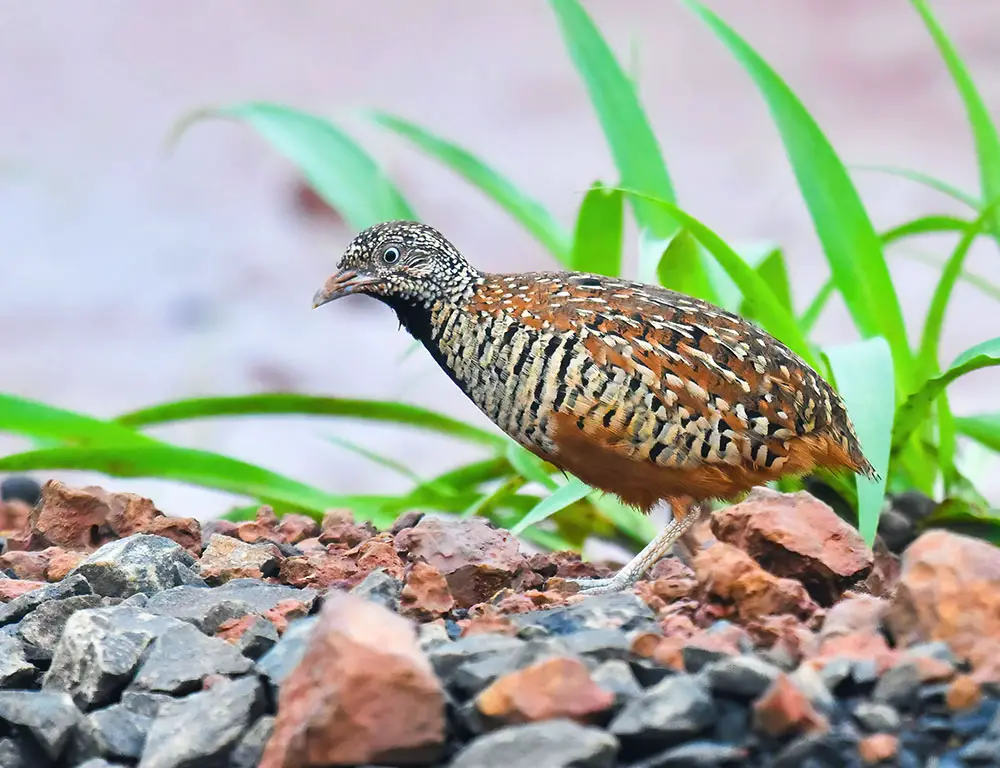
The Common Buttonquail, characterized by its distinct physical attributes, is well-suited for life in grasslands and open fields.
Here’s a summary of its physical characteristics:
Size
Common Buttonquails are relatively small birds, typically measuring 4.5 to 6 inches long and weighing 1 to 2 ounces. This places them in a similar size range as sparrows or finches.
Color
Their feathers exhibit a mixture of dull browns and grays, providing effective camouflage within their grassland and open field habitats. This coloration helps them blend seamlessly into their surroundings, offering protection from predators.
Body Shape
Common Buttonquails have a chunky body shape, with short wings and tail. Their legs are strong, facilitating ground-dwelling activities, and they have a round head, contributing to their unique appearance.
Gender Differences
Male Common Buttonquails typically have darker coloring compared to females. During the breeding season, females may display brighter plumage, facilitating sexual dimorphism.
Bill
The Common Buttonquail possesses a small yet sturdy bill, perfectly adapted for pecking at seeds on the ground. This bill serves as both a tool for foraging and a weapon, if necessary that contributes to the bird’s survival in its habitat.
Habitat and Distribution of the Common Buttonquail
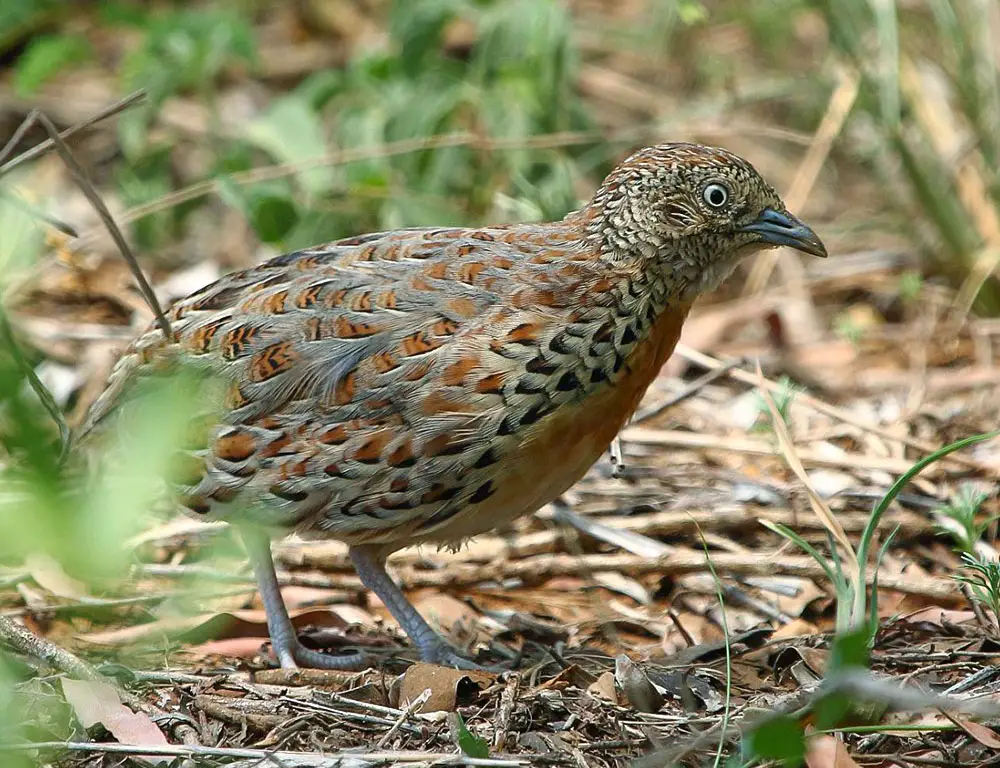
The Common Buttonquail, scientifically known as Turnix sylvaticus, is found across diverse habitats spanning several continents.
Here’s an overview of their habitat and distribution:
Habitat Range
Common Buttonquails exhibit adaptability to various environments, including dry grasslands, agricultural lands, shrublands, and occasionally marshy areas. They prefer habitats with ample ground cover for protection.
Geographical Distribution
These birds are distributed across Africa, Asia, Europe, and Australia, with sightings reported in countries such as Algeria, Egypt, Kenya, India, China, Spain, and across mainland Australia and Tasmania. They have also been known to appear in some Pacific Islands.
Migration
Many populations of Common Buttonquails are migratory, moving between different locations depending on the season. This migratory behavior contributes to fluctuations in their presence in certain areas throughout the year.
Diet and Feeding Behavior of Common Buttonquails
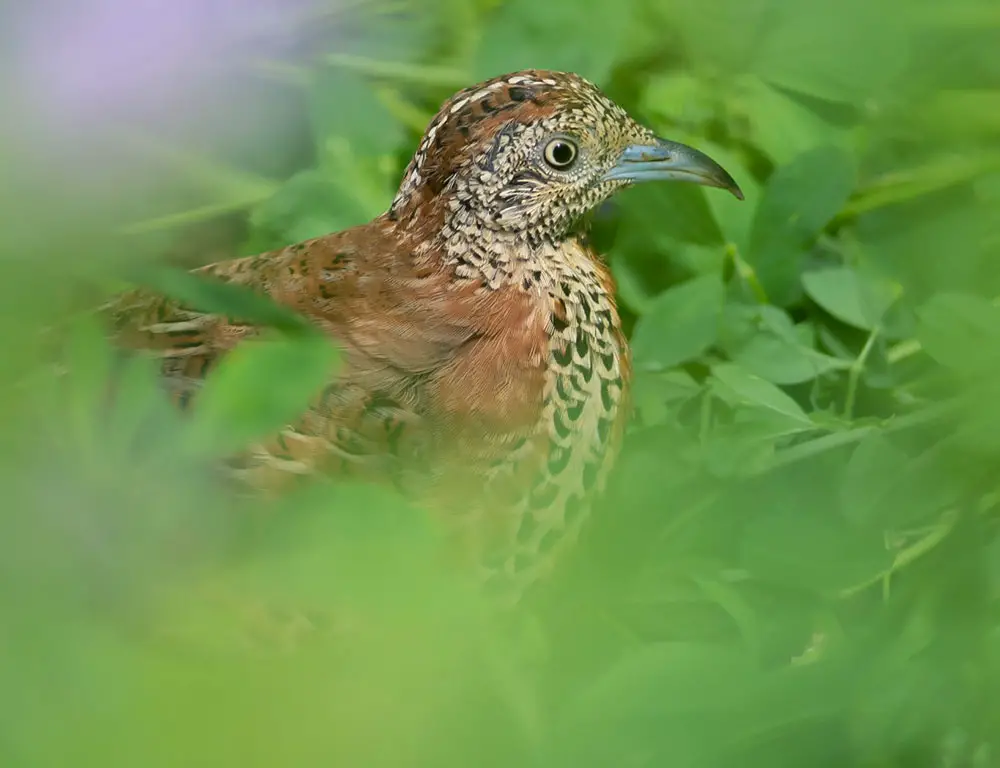
Common Buttonquails, or Turnix species, exhibit an omnivorous diet, consuming diverse food items. Here’s an overview of their dietary preferences and feeding behavior:
Seeds
Seeds are a significant component of the Buttonquail’s diet. They forage for seeds on the ground, often pecking at those dropped from trees and shrubs. Buttonquails display adeptness in searching for seeds among leaf litter and grasses.
Insects
Buttonquails also consume small invertebrates, including beetles, ants, and spiders. They demonstrate skill in uncovering these insects from under rocks or leaves, adding protein-rich sources to their diet.
Mollusks and Worms
Surprisingly, Common Buttonquails are not averse to consuming mollusks such as slugs, snails, or worms. This scavenging behavior contributes to their nutritional intake.
Leafy Greens
While seeds and invertebrates form the bulk of their diet, Common Buttonquails may also consume leafy greens occasionally. They may munch on tender shoots or leaves, providing additional nutritional balance to their diet.
Reproduction and Life Cycle of Common Buttonquails
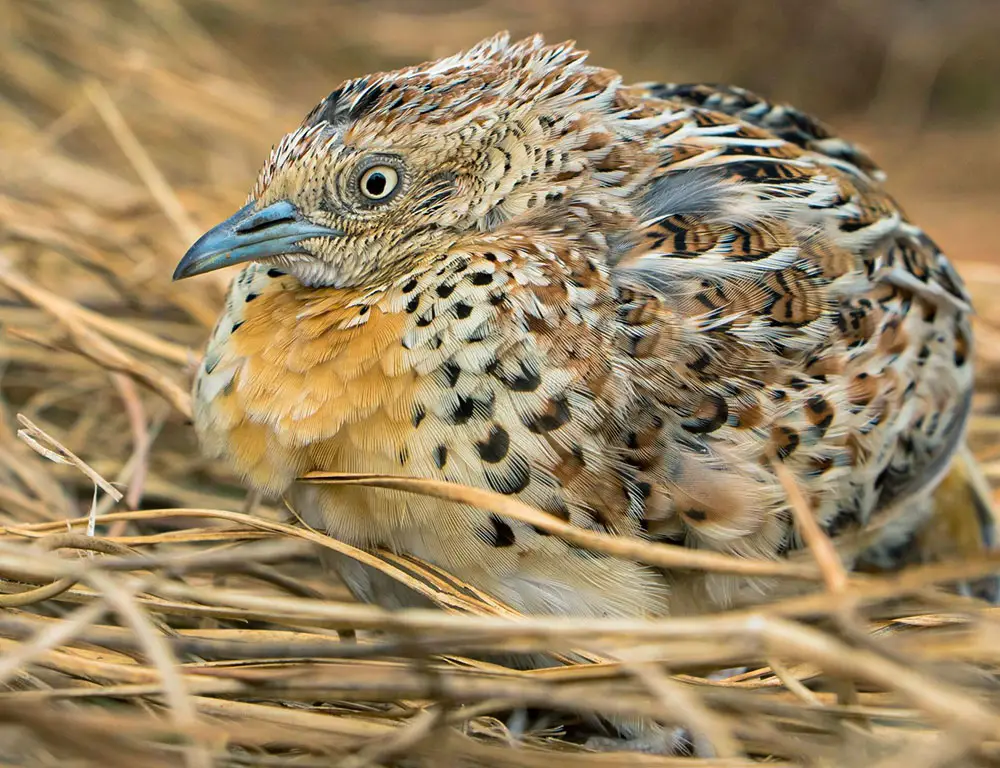
The reproductive cycle of Common Buttonquails offers intriguing insights into their unique breeding behavior and life cycle. Here’s a closer look:
Breeding Season
Common Buttonquails breed throughout the year, with a peak activity during wet seasons when environmental conditions are favorable.
Nesting
After mating, females lay a clutch of about 4-13 eggs in a nest constructed by the male. These nests are superficial scrapes on the ground lined with plant material.
Sequential Polyandry
An exciting aspect of Common Buttonquail reproduction is sequential polyandry, where females mate with multiple males and leave the responsibility of incubating the eggs to the males.
After laying her eggs, the female moves on to find another mate while the male remains behind to incubate the eggs.
Incubation
The male incubates the eggs for approximately 12-14 days until they hatch. This period of incubation is crucial for the development of the embryos.
Precocial Offspring
Newly hatched Common Buttonquails are precocial, meaning they are born fully feathered and capable of feeding themselves almost immediately after hatching.
The male parent continues to care for and protect the offspring, guiding them towards food sources and safeguarding them from predators.
Lifespan
Common Buttonquails have been observed to live for up to three years in the wild. However, their lifespan can vary depending on environmental factors such as predation and habitat loss.
Conservation Status of Common Buttonquails
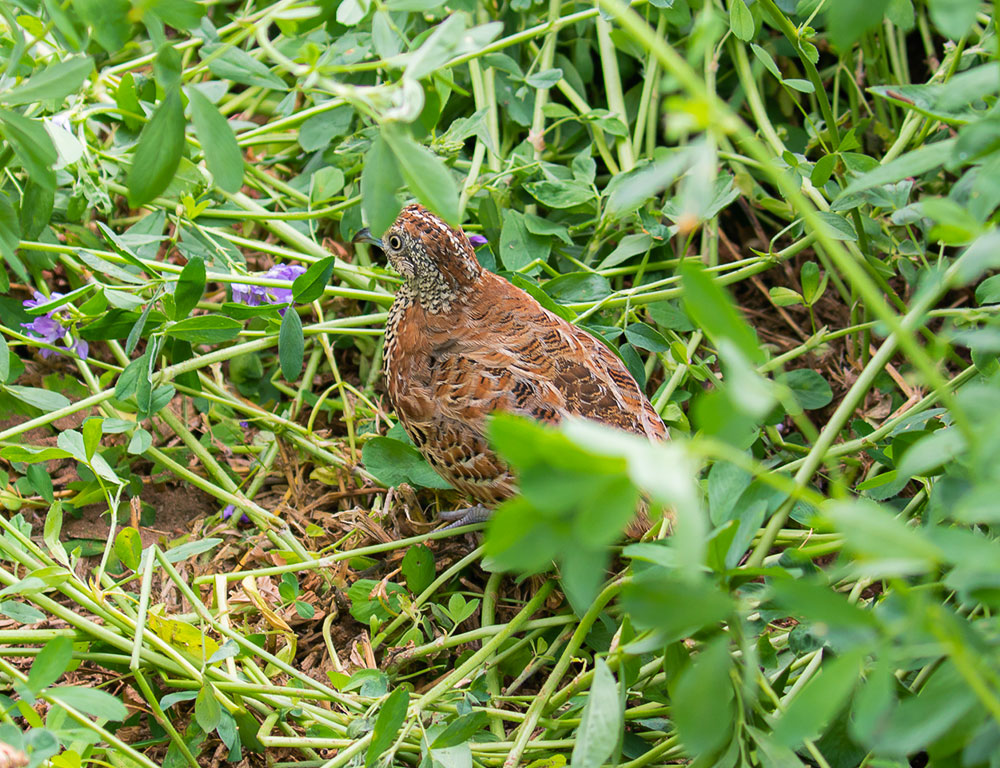
The conservation status of the Common Buttonquail (Turnix species) presents a complex picture, with certain subpopulations facing declines despite an overall classification of “Least Concern” by the International Union for Conservation of Nature (IUCN). Here’s an overview:
Overall Classification
The Common Buttonquail is categorized as “Least Concern” by the IUCN, primarily due to its wide distribution range across Asia and Europe.
Subpopulation Declines
Despite the overall status, specific subpopulations, particularly in Europe, are experiencing declining numbers. While concrete data on remaining populations may be lacking, the observed trends indicate the need for conservation action.
Habitat Loss
One of the primary threats to Common Buttonquails is habitat loss. Human activities such as agriculture and construction often affect their preferred habitats, such as grasslands and farmlands.
Destruction or alteration of these habitats poses significant challenges to the survival of these birds.
Hunting
Hunting pressure also contributes to the declining numbers of Common Buttonquails, particularly in regions like North Africa and South Asia, where they are targeted for food or sport.
Conservation Efforts
Despite the challenges, ongoing conservation efforts aim to protect and preserve Common Buttonquails.
Organizations like BirdLife International are working on raising awareness about their plight, while local initiatives and governmental regulations are also being implemented to address habitat loss and hunting practices.
Conclusion
Delving into the world of the Common Buttonquail has revealed its remarkable adaptability, widespread distribution, and intriguing reproductive behavior.
Despite their ability to thrive in diverse habitats and their unique reversed breeding roles, these birds face significant threats, particularly from habitat loss.
As we continue to study and appreciate the complexity of species like the Common Buttonquail, we gain a deeper understanding of our planet’s biodiversity and the interconnectedness of all living beings.
There is still much to learn about these fascinating birds, and our efforts to conserve their habitats and protect their populations are vital for maintaining ecological balance.
Let us remain vigilant in our appreciation and conservation efforts, ensuring the survival of the Common Buttonquail and other species for generations to come.